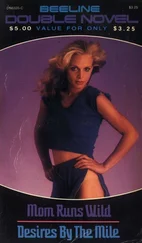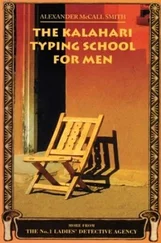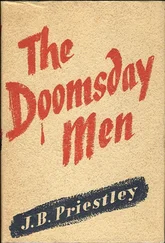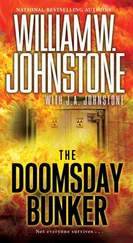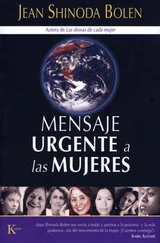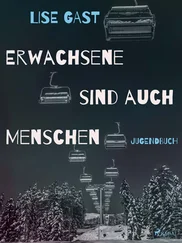Each block had been cut by hand. That was the unenviable task of a young Canadian physicist, Walter Zinn. Today he stood with Fermi on the balcony, his fingernails still blackened by the graphite. Together with half a dozen colleagues and about thirty local Chicago lads, Zinn and another physicist, Herbert Anderson, had worked and cursed non-stop in twelve-hour shifts for six solid weeks – until last night, the evening of 1 December 1942, when their labour was finally complete. Now all that remained was to see whether theory could be turned into reality and the energy of the atom released.
The spark that ignites an atomic chain reaction is a neutral particle – one with no electric charge – called, reasonably enough, a neutron. The nucleus of an atom of uranium-235 can be split in half when struck by a neutron. This is fission, the reaction at the heart of a nuclear reactor – and of an atomic bomb. Changing the mass of an atomic nucleus, either by splitting it (fission) or combining it with another nucleus (fusion), creates energy. Albert Einstein showed just how much energy was locked up inside every atom. His equation E = mc 2states that the amount of energy liberated when matter is annihilated equals the mass of the matter multiplied by the speed of light squared. The speed of light is 186,000 miles per second, so there is a vast reservoir of potential energy in matter. On 6 August 1945, when the first atomic bomb exploded above Hiroshima, just 1 per cent of the bomb’s uranium was transformed into the energy that devastated the Japanese city.
Every time a uranium nucleus splits, two or three spare neutrons are expelled, and each of these freed neutrons can split another nucleus. The neutrons this frees can in turn split between four and nine more nuclei, and so on in a succession of reactions involving an exponentially increasing number of atomic nuclei. This is what physicists call a supercritical chain reaction – a potentially explosive atomic wildfire spreading through the fabric of matter, turning it into pure seething energy.
That morning on the squash court, however, Fermi and Szilard did not want an explosive reaction, but a controlled one – a critical reaction in which just enough neutrons are produced to keep the chain reaction self-sustaining. They were also trying to make this reaction work using natural uranium, of which only 0.7 per cent was the highly fissile variety, uranium-235. To do this they needed to slow down the lightning-fast neutrons. This was the crucial task performed by the bricks of pure, black graphite: they acted as the moderator.
As an extra means of keeping the nuclear reaction under control, they had inserted cadmium rods into the pile. Cadmium is one of the most powerful absorbers of neutrons, and if there are no neutrons flying around in the pile, then there’s no chain reaction. Today, as an insurance policy, three young physicists stood on an elevator platform above the pile, ready to flood it with a cadmium-salt solution, just in case something went wrong and the rods didn’t work. These three were known, only half-jokingly, as the ‘suicide squad’.
Walter Zinn had designed the final cadmium rod to drop back automatically into the pile should the neutrons rise above a certain level. They christened this rod ‘ZIP’ in honour of its creator. If ZIP failed, then another rod could be released from the balcony by cutting a rope. A rather sheepish-looking physicist stood ready with an axe. If that failed to close down the pile, then there was the suicide squad, and after that… well, in 1942 no one had heard of the words ‘meltdown’ and ‘Chernobyl’.
At 9.45 a.m. Enrico Fermi and his team began the painfully slow process of withdrawing the cadmium rods from the pile, thus increasing the flux of neutrons. As they did so, final checks were made on the measuring equipment and the safety mechanisms. Once this was completed, everyone’s eyes turned to the man from Rome. He glanced down at his watch; it was 11.30. Fermi looked round at the expectant faces and smiled.
‘I’m hungry,’ he said. ‘Let’s go to lunch.’
Enrico Fermi was the captain of the team of forty-two scientists who had worked on the project. Unlike the Italian, Leo Szilard wasn’t a hands-on kind of scientist. Fermi had been annoyed when Szilard declined the opportunity of helping to build the graphite pile. Some said he didn’t like getting his hands dirty, but Szilard knew his strengths, and sawing through graphite blocks was not one of them. He was an ideas man, someone who could see solutions before most people had even grasped the problem. A friend once memorably described the portly physicist as an ‘intellectual bumblebee’, a footloose fertilizer of ideas. 2
When Leo Szilard had first suggested in 1939 that atomic bombs were a real possibility, Fermi’s incredulous response had been ‘Nuts!’ 3Since then, he had learned to treat the unconventional Hungarian’s insights with greater respect, although Fermi was never completely comfortable with his mercurial colleague. ‘He is extremely brilliant’, admitted Fermi in 1954, ‘and… he seems to enjoy startling people.’ 4
Although he was no graphite cutter, Szilard had provided many of the key theoretical insights during the building of the atomic pile. He suggested the pile’s lattice structure, the geometrical arrangement of uranium spheres within the hollow graphite blocks designed to maximize the effect of the neutrons. He also realized that it was essential to use pure graphite as a neutron moderator. Impurities simply absorbed neutrons, working against a chain reaction. (This was a subtlety which Hitler’s best atomic physicists – including quantum theorist Werner Heisenberg – failed to grasp. As a result, their bomb project remained largely wishful thinking.)
Most importantly it was Leo Szilard who, in 1933, had first seen how to unlock the fearsome forces in the heart of every atom. It came to him in a flash of insight while he was crossing a road near Russell Square, in London’s Bloomsbury. The key was a neutron chain reaction, a domino effect rippling through matter and releasing an ever-greater flood of neutrons. Uncontrolled, it would cause an explosion more powerful than any yet created by humankind; controlled, it could supply the world with an unlimited supply of cheap energy. Since this scientific epiphany nine years earlier, the prospect of atomic energy had dominated Szilard’s every dream and nightmare. And now his bold idea was about to be put to the test.
After an uneasy lunch, during which they discussed everything apart from the day’s experiment, the physicists returned to the squash court. At 2.20 p.m. they again began withdrawing the thirteen cadmium rods, little by little. Enrico Fermi kept a sharp eye on the dials of the neutron counters. At 3.25, he was ready to remove the final rod.
‘Pull it out another foot,’ he called to George Weil, who was down on the squash court operating the control rod. 5Everyone’s eyes were fixed on that rod. It was marked in feet and inches, showing how much of the cadmium remained inside the pile absorbing neutrons.
‘This is going to do it,’ said Fermi to Arthur Compton, the physicist in overall charge of the Chicago project. ‘Now it will become self-sustaining. The trace will climb and continue to climb. It will not level off.’ 6
The forty-two scientists scarcely breathed as they faced the implacable black mass of graphite and radioactive uranium. According to Herbert Anderson, ‘At first you could hear the sound of the neutron counter, clickety-clack, clickety-clack. Then the clicks came more and more rapidly, and after a while they began to merge into a roar.’
The number of neutrons was so high that the counters could no longer cope. Fermi, his voice steady, asked for the chart recorder to be switched on. Now there was just the faint scratching of the pen as it moved across the paper. The graph showed a steadily increasing level of neutrons. ‘It was an awesome silence,’ recalled Anderson with real emotion. 7
Читать дальше


